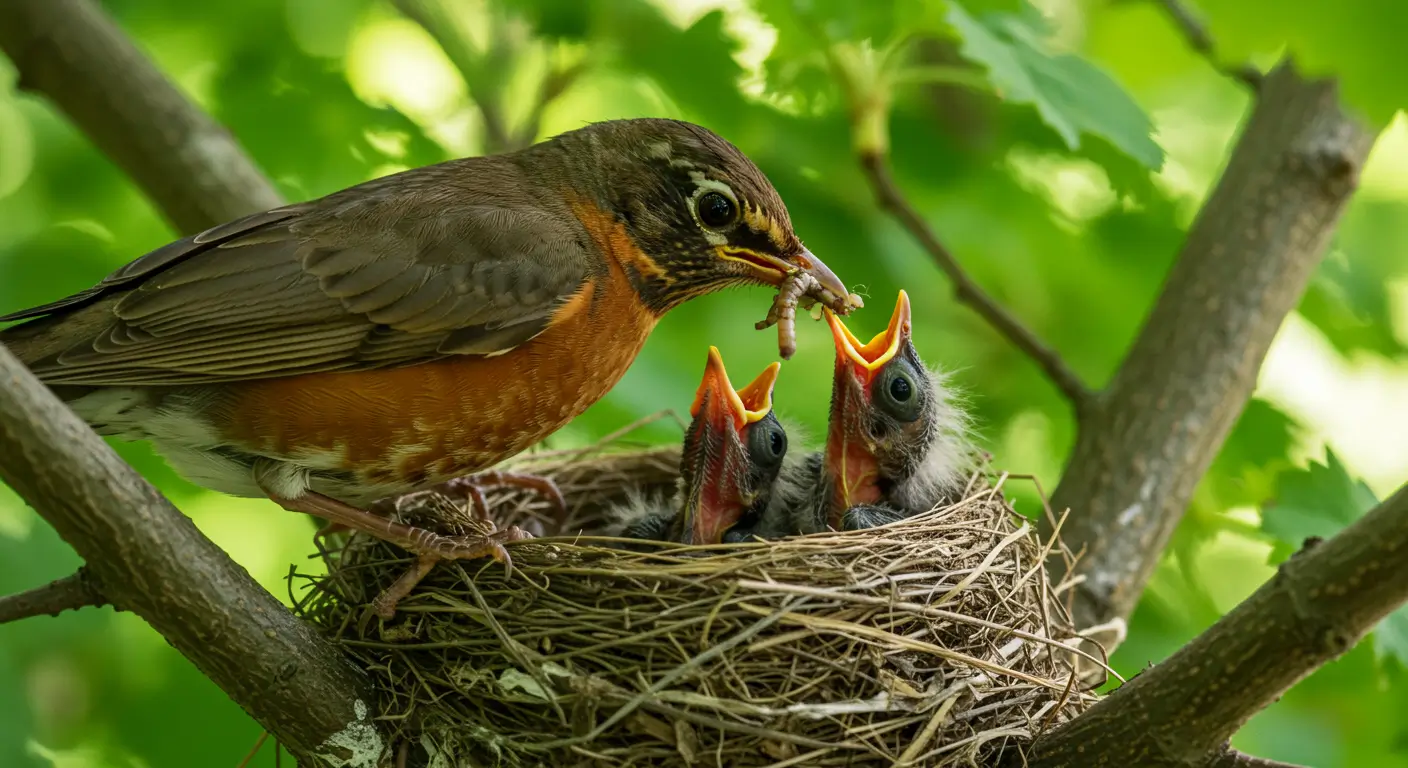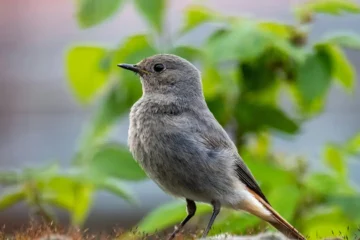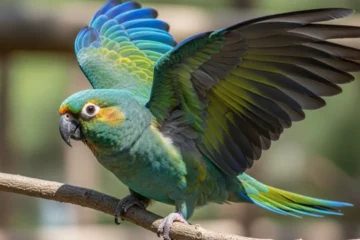Different species of birds have different ways to feed their babies and they are defined based on how their newly born requires nutrition.
1. Regurgitation Feeding
Parent birds consume food, partially digest it, and regurgitate it into the mouths of their chicks. This method guarantees that the food is soft and easy for the babies to swallow and digest.
It also allows parents to carry food back to the nest in their stomachs for long distances.

2. Crop Milk Feeding
Some birds produce a special substance called crop milk. Crop milk is a nutrient-rich secretion produced in the parents’ crops (a part of digestive system). This milk-like substance is fed directly to the chicks to help them grow rapidly.
3. Insect and Worm Feeding
Birds often bring insects and worms to their chicks in the early days of their life. These protein-rich foods provide nutrients for the baby birds’ development. Parents hunt nearby and return to make sure their chicks remain well-fed.

4. Seed and Berry Feeding
Seeds and berries are commonly fed to the plant-eating bird species young as they grow older.
Parents may soften seeds by crushing them or soaking them in water before feeding. This method gradually introduces chicks to their adult diet.
5. Direct Feeding in the Nest
Parent birds gently place food directly into the open mouths of their babies. Chicks involuntarily open their mouths wide to signal hunger. This method makes sure that each chick receives a fair share of the meal.
6. Feeding in Turns
Parents often feed their babies one by one in rotation. The loudest or most active chick typically gets fed first, but parents balance the feeding. This practice helps all nestlings grow evenly and reduces sibling competition.

7. Gradual Independence
Parents encourage their babies to start finding food for themselves as they grow. This process helps young birds learn essential survival skills before leaving the nest. It’s a natural transition from complete dependence to self-sufficiency.
Unique Facts About the Bird’s Feeding Habits
There are certain unique facts about the feeding habits of different birds which can differentiate among them and other organisms.
- Some birds produce a special “crop milk” to feed their chicks.
- Crop milk is a nutrient-rich secretion produced in the parent birds’ crop, not actual dairy milk.
- Songbirds feed their chicks insects, worms, and soft fruits during their early days.
- Hummingbirds regurgitate a mix of nectar and insects to nourish their tiny babies.
- Raptors like eagles and hawks bring pieces of prey for their chicks.
- Many waterfowl birds guide their chicks to search for insects and plants themselves shortly after hatching.
- Some birds regurgitate partially digested food to feed their young directly in nest.
- Baby birds grow rapidly and require protein-rich diets provided by their parents.
- Parent birds in colder regions often feed their chicks extra food during the day to sustain them overnight.
Birds Feed Their Babies Different from Other Organisms
Birds have unique and different feeding habits because of their different body system and way of living. These organisms give less time to their babies to learn how to grab their food as compared to mammals.

Do Birds Feed Their Babies Milk?
No, most birds do not feed their babies milk. Birds feed their babies differently from mammals. While mammals make milk for their young, birds don’t have the body parts to do this. Some birds make a special food called crop milk.
These birds make this special food in their bodies to feed their baby birds. This helps the baby birds have the food they need for growth. This special feeding method shows us one of the amazing ways parent birds help their chicks grow up healthy in nature.
Which Birds Produce Crop Milk?
Crop milk is a special type of milk produced from the lining of a bird’s digestive system called “Crop”. This milk is rich in proteins and fat which makes it ideal for proper nutrition required by the developing baby bird.
Here are some birds that produce this special type of milk:
- Pigeons and Doves: Both parents produce crop milk which is rich in protein and fat. This serves the purpose of nourishing their squabs during first week of life.
- American Flamingos: They produce bright red crop milk containing carotenoids that contribute to their vibrant coloration and provide essential nutrients to chicks.
- Rock Pigeons: Rock pigeons are among the few bird species where both male and female feed their chicks crop milk, critical for their early development.
- Mourning Doves: Mourning doves feed their nestlings crop milk exclusively during the first few days after hatching and are known for their gentle nature.
- Ring-Necked Doves: These doves produce crop milk that makes sure that their chicks grow quickly and healthily.
- Sandhill Cranes: Crop milk in Sandhill cranes is vital for their young during the initial stages of development in wild wetland habitats.
Most Asked Question
Do all bird species produce crop milk?
No, crop milk is produced by a few bird species, such as pigeons, doves, flamingos, and emperor penguins.
How long do birds feed their babies crop milk?
Birds typically feed crop milk to their chicks for the first 7–10 days before transitioning to solid foods.
Is crop milk similar to mammalian milk?
No, crop milk lacks lactose and is a secretion made of proteins, fats, and other nutrients unique to birds.
How do other birds feed their chicks?
Birds like sparrows and robins regurgitate insects or seeds to provide a soft and digestible meal for their chicks.




